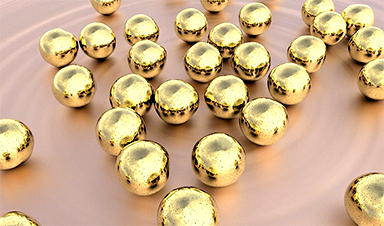Introduction
Surface-enhanced Raman spectroscopy (SERS) uses both roughened metal surfaces and nanoparticles in colloidal solutions to enhance the Raman signal. Recent research has also had a focus on zinc oxide nanostructures.
Nanoparticles are more commonly used due to the fact they can be easily made in the lab whereas roughened surfaces require complicated lithography techniques, with not many surfaces available to buy commercially.
What are Nanoparticles?
Metallic nanoparticles come in a variety of different metals, shapes, sizes, and compositions. The nanoscale size causes electron confinement in metal nanoparticles, which results in surface plasmon resonance. Plasmonic nanoparticles such as silver and gold are the most commonly used due to their unique physical properties.
As well as direct detection of samples mixed with nanoparticles, nanoparticles can be deposited or spin-coated onto various surfaces for a more accurate spread for detection, which is similar to using solid roughened surfaces.
The particle shape and size can be altered to give a better enhancement of SERS, but other factors can also be changed. A variety of metals can be used, as well as changing the reducing agent, stabilizer, concentration, temperature, and addition rate.
How They Are Used
SERS nanoparticles can be used across numerous fields. SERS is used for a wide range of testing, including forensics, medical, analytical, trace material analysis and point of care testing. It can be used in research for drug discovery and has the potential to detect diseases such as diabetes, cancer, Alzheimer’s and Parkinson’s. A big area of interest is in the detection of the latest biological and chemical threats, as there are handheld instruments for field testing available.
Nanoparticles can be used as nanotags to label and authenticate different objects. Gold spheres can be functionalized with reporter molecules encased in a silica shell. The nanotags can be used to encode banknotes and jewelry for security, as well as being used for identification of fraud during transportation of goods.
SERS is a fast, label-free technique that can be used for point-of-care testing for therapeutic drug monitoring. SERS is also a chemically specific, label-free technique that provides a non-toxic alternative to immunofluorescence for looking at tissues in vivo.






Leave A Comment